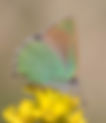Search Results
924 results found with an empty search
- Woodland Woolly Threads Monolopia gracilens
Wildflower Mount Diablo Woodland Woolly Threads Scientific Name: Monolopia gracilens Family: Asteraceae (Sunflower Family) Blooms: Apr - May Color: Yellow-Orange Annual herb Native, endemic to California Fire Follower. California Rare Plant Rank: 1B.2 (rare, threatened, or endangered in CA and elsewhere ). This plant is rare in Mount Diablo State Park. See full list Jump to Blooming Now Blue / Purple Red / Pink White Yellow / Orange Invasive Plants Kevin Hintsa
- Umber Skipper
Umber Skipper Lon melane Hesperiidae Skippers Flies April to October Host Plant Grass Nectar Plant California buckeye, Bull thistle Daniel Fitzgerald Daniel Fitzgerald Underwing
- Large Marble
Large Marble Euchloe ausonides Pieridae Whites, Sulfurs Flies February to July Host Plant Mustard Family Nectar Plant Chia Daniel Fitzgerald Female Daniel Fitzgerald Underwing
- Lotus Hairstreak
Lotus Hairstreak Callophrys dumetorum dumetorum Lycaenidae Blues, Coppers, Hairstreaks Flies March to May Host Plant Buckwheat Nectar Plant Daniel Fitzgerald Underwing
Hoplitis Mason Bee Hoplitis Megachilidae Hoplitis Describe your image Describe your image Describe your image Describe your image Describe your image Describe your image Description Hoplitis bees come in a variety of shapes and sizes, but Mount Diablo's Hoplitis bees tend to be sleek-looking and elongate (longer-bodied than Osmia ). Female bees carry pollen on abdominal scopa, and both sexes have an arolium pad between their front leg tarsal claws, unlike Megachile . Their forewings have 2 submarginal cells and a stigma at least twice as long as broad. These bees are black or metallic green. Nectar/ Pollen Plants Hoplitis are generalists. Habits Solitary, some nest in hollowed out stems, tubes, wall crevices, while others nest in the ground. Use chewed leaves, mud and pebbles in nest-building to create partitions, hence “mason.” Season April - early June.
- What's Blooming Now on Mount Diablo
What's Blooming Now on Mount Diablo See the list of blooming plants BACK TO LIST
- Coyote
Coyote By Jenn Roe and Dirk Muehlner Marvelous Animal Adaptations May 21, 2025 by Dirk Muehlner The coyote is a very vocal mammal that communicates with yips, whines, woofs, huffs, growls, and group yip-howls (part of a complex greeting ceremony). It’s best known for its iconic lone howl, which announces a solitary coyote separated from its pack. Early Aztec Indians called it “coyotl”, which means barking dog, and scientists label the coyote: Canis latrans, which also translates into barking dog. Its different vocalizations serve as alarms, greetings, or search for contact. Where do coyotes live? In the past, coyotes were most numerous in grasslands, but after humans exterminated their main predator, the highly territorial gray wolf, coyotes vastly expanded their range throughout North America and parts of Central America. The versatile (dare we say “wily”) coyote can now be found in almost all habitats and even some cities and suburbs. Its preferred den is a burrow in a slope, but a hollow tree trunk, dense brush pile, or even an abandoned car can be home. It’s Hard to Starve a Coyote The coyote’s ability to survive and thrive is further supported by its flexible menu. Mostly carnivorous, it prefers small prey such as rabbits, ground squirrels and other rodents. It will also consume birds, eggs, fruits and even cats and dogs. Coyotes in neighborhoods are attracted to pet food, garbage, and even bird feeding stations. Download this article by Dirk Muehlner Coyotes typically hunt alone, but sometimes in pairs and family packs. When giving chase, or running from danger, the coyote’s top speed can reach up to 30 mph, making it the swiftest canine in North America. BACK TO LIST
- Coyote and Quail
Coyote and Quail Focus on Coyote and Quail BACK TO LIST
- Warrior's Plume (Yellow form) Pedicularis densiflora
Wildflower Mount Diablo Warrior's Plume (Yellow form) Scientific Name: Pedicularis densiflora Family: Orobanchaceae (Broomrape Family) Blooms: Feb - May Color: Yellow-Orange Perennial herb Native Jump to Blooming Now Blue / Purple Red / Pink White Yellow / Orange Invasive Plants Simona Laden
- Mountain Dandelion Agoseris heterophylla
Wildflower Mount Diablo Mountain Dandelion Scientific Name: Agoseris heterophylla Family: Asteraceae (Sunflower Family) Blooms: Apr-Jul Color: Yellow-Orange Annual herb Native Jump to Blooming Now Blue / Purple Red / Pink White Yellow / Orange Invasive Plants Daniel Fitzgerald Daniel Fitzgerald
- Common Sandweed Athysanus pusillus
Wildflower Mount Diablo Common Sandweed Scientific Name: Athysanus pusillus Family: Brassicaceae (Mustard Family) Blooms: Feb-Apr Color: White Annual herb Native Jump to Blooming Now Blue / Purple Red / Pink White Yellow / Orange Invasive Plants
- Windmill Pink, Common Catchfly Silene gallica
Wildflower Mount Diablo Windmill Pink, Common Catchfly Invasive Scientific Name: Silene gallica Family: Caryophyllaceae (Pink Family) Blooms: Apr - Jun Color: Red-Pink Annual herb Introduced Naturalized from Europe, per Errter & Bowerman Jump to Blooming Now Blue / Purple Red / Pink White Yellow / Orange Invasive Plants Daniel Fitzgerald Daniel Fitzgerald Mike Woodring










